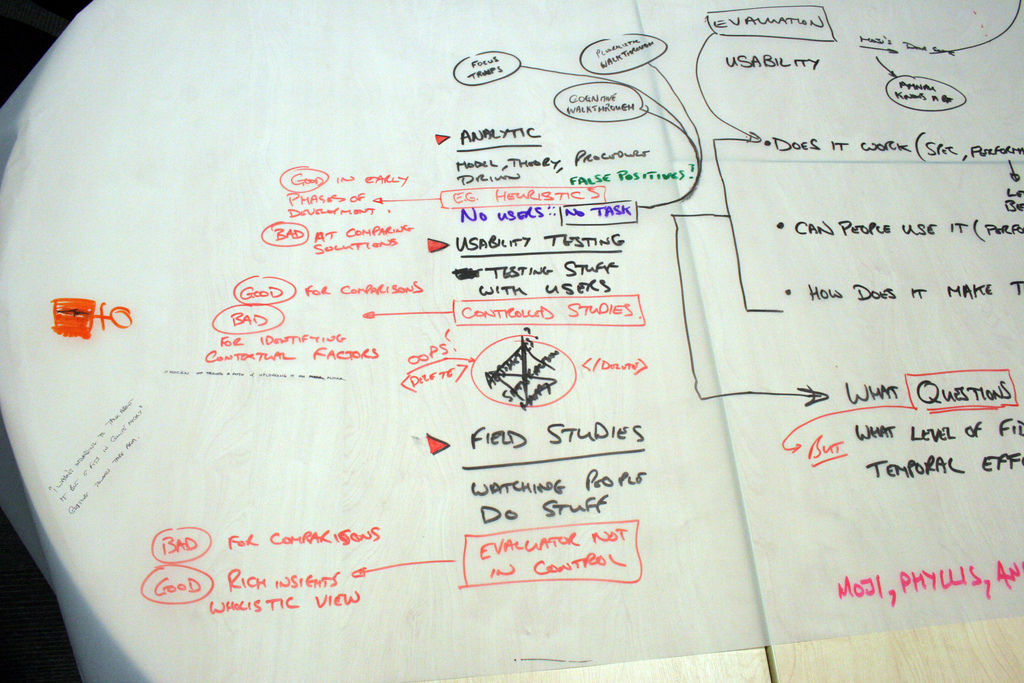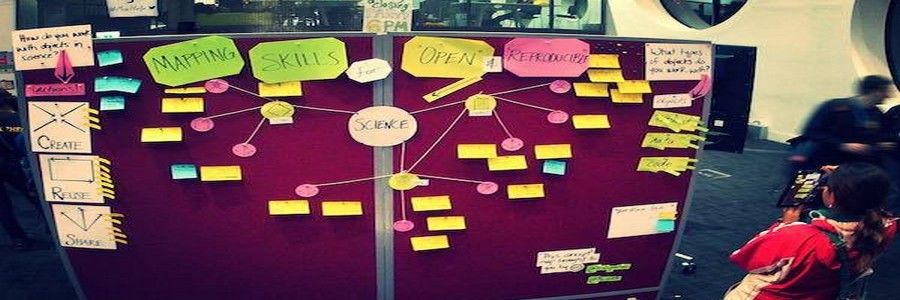If you want to generate a user research plan that gets read and is easy for people to agree on; you want to keep things simple. How simple? We think that you might be able to get away with a single page though you’ll need to pay careful attention to the wording to keep it that way. You can always create a more detailed plan to work from but for your stakeholders – they have other concerns and user research is only a tiny part of their remit. If you make it easy for them to engage with your plan; it’s much more likely they will read it and sign up to it.
What to Include in a Single Page User Research Plan?
 Author/Copyright holder: Andy Bardill. Copyright terms and licence: CC BY-SA 2.0
Author/Copyright holder: Andy Bardill. Copyright terms and licence: CC BY-SA 2.0
With only a single page; there’s no room for fluff. Leave the academic writing skills in the classroom and stick to plain English. Here’s what you need to make this work:
- A title – it should be obvious but over the years we’ve come to realize it isn’t always. Labelling a document makes it easier for someone to know what it’s about.
- Authorship details – if people have feedback on the plan; who should they give it to?
- Stakeholder details – who else is the plan being shared with? This helps stakeholders identify other relevant parties (if you’ve omitted anyone).
- The date – this should also include any revision dates. People want to be certain they’re working with the latest version of a document.
- Document control – if your company uses a document control system; it’s a good idea to follow it in your titles, filing, etc.
- An introduction – this is your background. A quick paragraph on why the research is needed and any history that is relevant.
- Objectives – what are you trying to achieve? One short statement. Research is best when it tries to satisfy a single objective; if you have dozens of objectives – you’re over-reaching and you need to plan again.
- The questions to be asked – another short list. You can’t get the answers to hundreds of questions from any piece of research; 3-5 is probably best but no more than ten.
- The methods to be used – what will you do, where will you do it and how long do you need.
- The people involved – it’s always a good idea to define the users you will do your research with. Use broad brush strokes and keep detail to a minimum.
- The time needed –it’s always a good idea to keep people informed as to when they will see results from a plan. If a project is a long one; you might want to include some preliminary milestones so that people can check on progress as well as a final reporting date.
- Where supporting information can be found – if there’s any other data that might be relevant; you can signpost it. This can include both previous studies, results, etc. and the suggested scripts that you use in the research.
Summary
Short and simple is a very effective way of communicating a plan. It’s much easier to expect people to read and engage with something that doesn’t require hours of attention to digest.
Header Image: Author/Copyright holder: Creative Commons. Copyright terms and licence: CC BY 4.0











